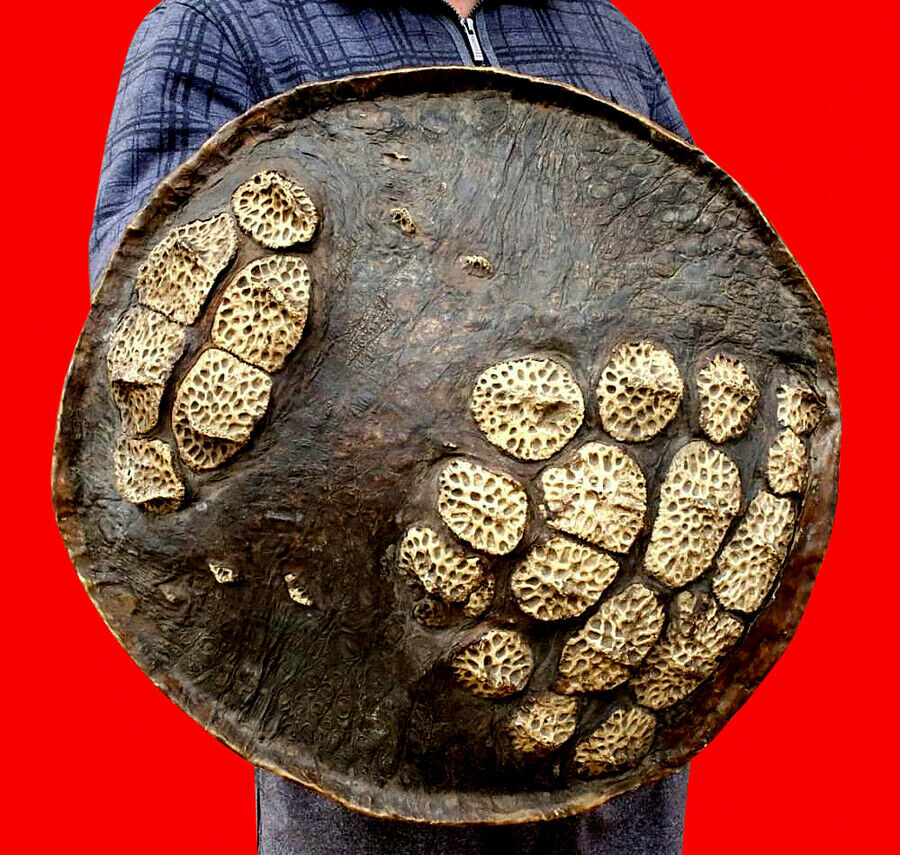-40%
Antique Punu Mukudj. Okuyi Mask. Gabon. African Mask.
$ 183.26
- Description
- Size Guide
Description
These are tremendously beautiful masks from Gabon. Really gorgeous. Photos can't capture the spirit in these.This is a female mask
This one measures 12 x 7 inches. It is old and of high quality. The condition is as shown in the pictures. I'm happy to provide additional pictures if you message me.
I have metal mask stands and I'll be happy to provide one with the mask upon request.
This is some information about these masks from the Met Museum website and the Art Institute of Chicago website:
In the Punu communities of southern Gabon, mukudj masks are considered portraits of an exceptionally beautiful female member. The coiffure, featuring a prominent sagittal lobe flanked by two lateral tresses, is a classic style of dressing women's hair practiced throughout the region during the nineteenth century. Lozenge cicatrization markings were incised on the forehead and temples of Punu women as a form of aesthetic embellishment and a sign of sensuality. Classic mukudj masks often emphasize a subdivision of the motif into nine units, which is significant in light of the fact that, among the Punu, nine is considered a mystically powerful number and a catalyst in the healing process. In mukudj mask representations, the prominence of the number nine, as well as the red band that accentuates the hairline, make reference to the mystical powers commanded by the dancer. It is those powers that are believed to provide him with the talent and protection necessary to perform. The stylized rendering of the eyes, represented as closed slits, evokes a meditative serenity while at the same time affording the wearer an unobstructed view of the performance arena he must negotiate. The application of white kaolin to the surface of the masks is a reference to spiritual transcendence. The white clay is a sacred material linked to the parallel ancestral realm of existence and also a cosmetic associated with idealized beauty.
Mukudj dances are commissioned by community leaders to mark important occasions-to commemorate the memory of an important member of the community, to celebrate the return or the visit of an honored individual, or to mark a development that will enhance the community's well-being. The mukudj dance is performed on stilts of up to three meters in height; dancers must train from childhood to master the difficult and demanding choreography. During official celebrations, a mukudj dancer towers above his audience and executes acrobatic feats that demand agility, strength, and an acute sense of equilibrium. Because of the extraordinary nature of the performance, dancers are perceived as exceptional individuals who draw upon mystical powers to accomplish such a feat. The thrilling spectacle of mukudj performances alternates between passages of lyrical grace and explosive power.
Mukudj performances are appreciated as the most aesthetically appealing and exciting form of expression in Punu culture and consequently have become a national icon of Gabon. Mukudj masks are displayed as proud insignia of Punu cultural identity in domestic contexts in the capital, Libreville, as well as in rural villages of the remote interior.
http://www.artic.edu/aic/collections/artwork/20578
This mask is defined by an elaborate and highly stylized bi-lobed coiffure, painted black, which frames an idealized female face. The face is painted white with kaolin, which both references the earthly beauty of the woman represented and symbolizes the spirits of past ancestors. The diamond-shaped scarification marks on the forehead and the square-shaped marks on the temples emphasize the perfect, symmetrical beauty of the face, with its dramatically arched eyebrows, almond-shaped slit eyes, small ears, delicate nose, and slightly protruding mouth and chin. Mukudj masks became extremely popular among European art collectors during the 1920s and 1930s, as their aestheticized and abstract attributes intersected with the ideals of modern art. Today the Punu especially embrace the mukudj mask as a sign of ethnic identity, thus often displaying them within their private domestic spaces and incorporating them into a host of celebrations and communal events.












